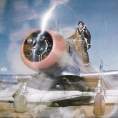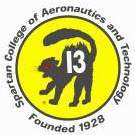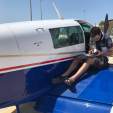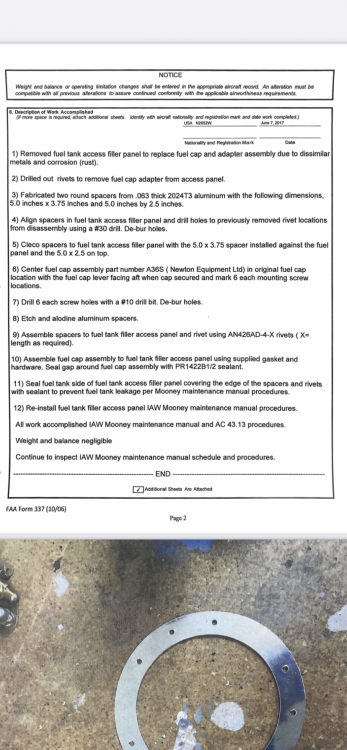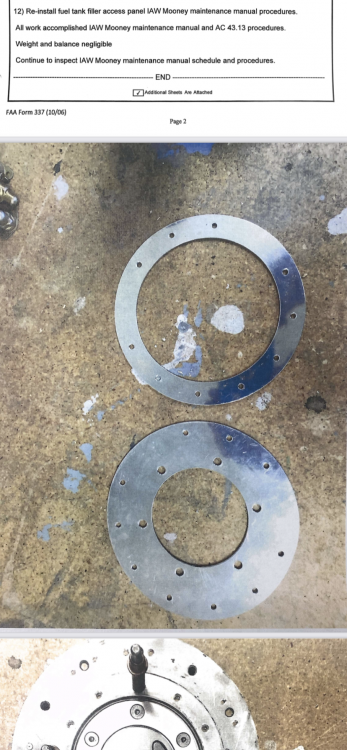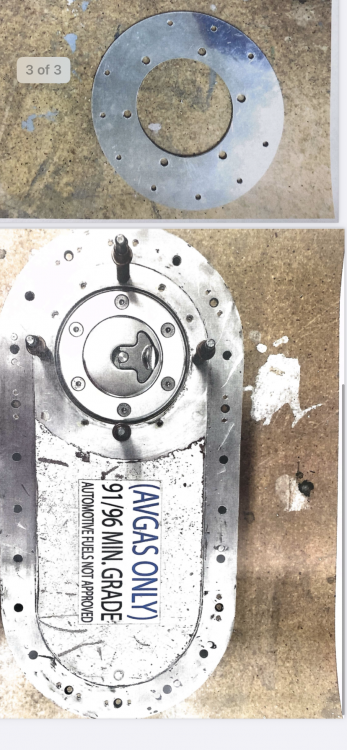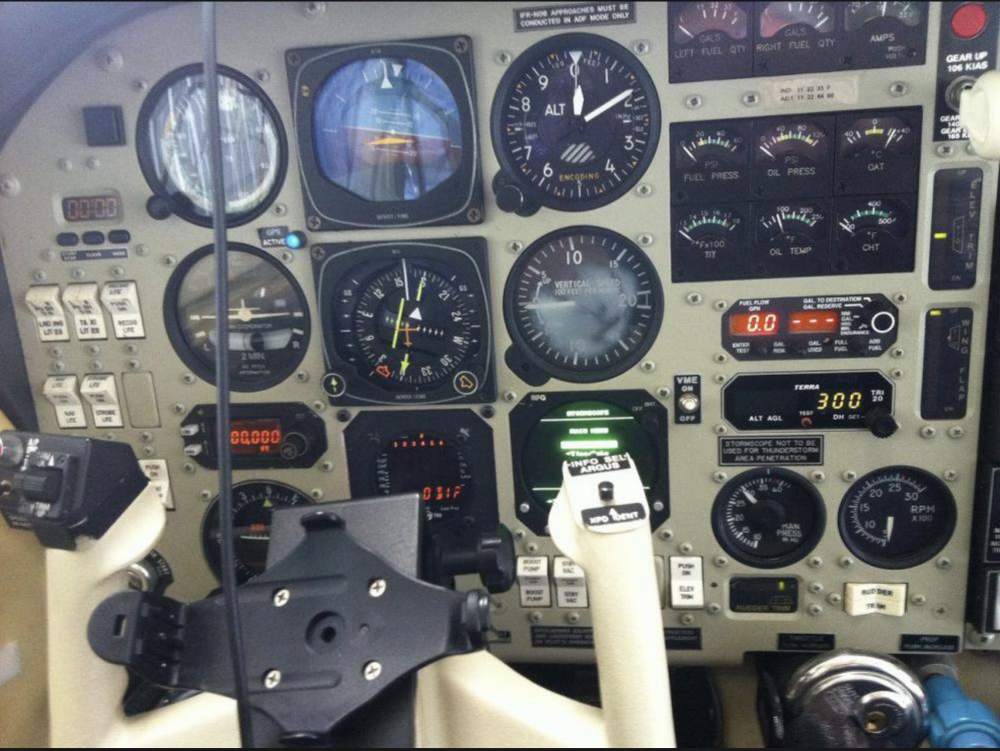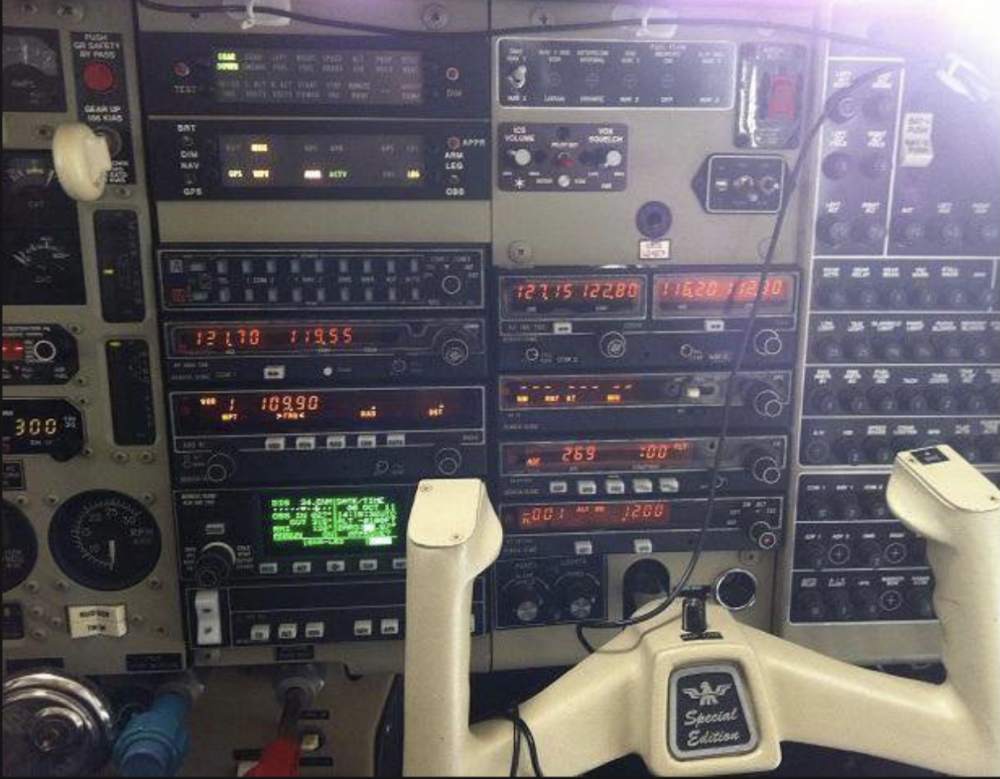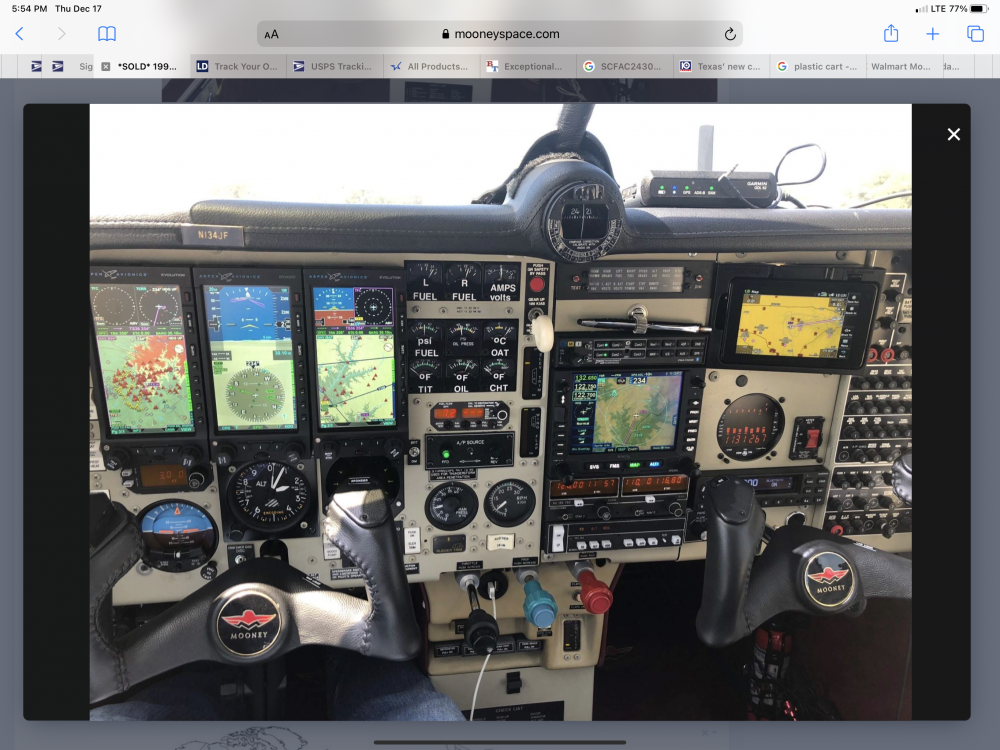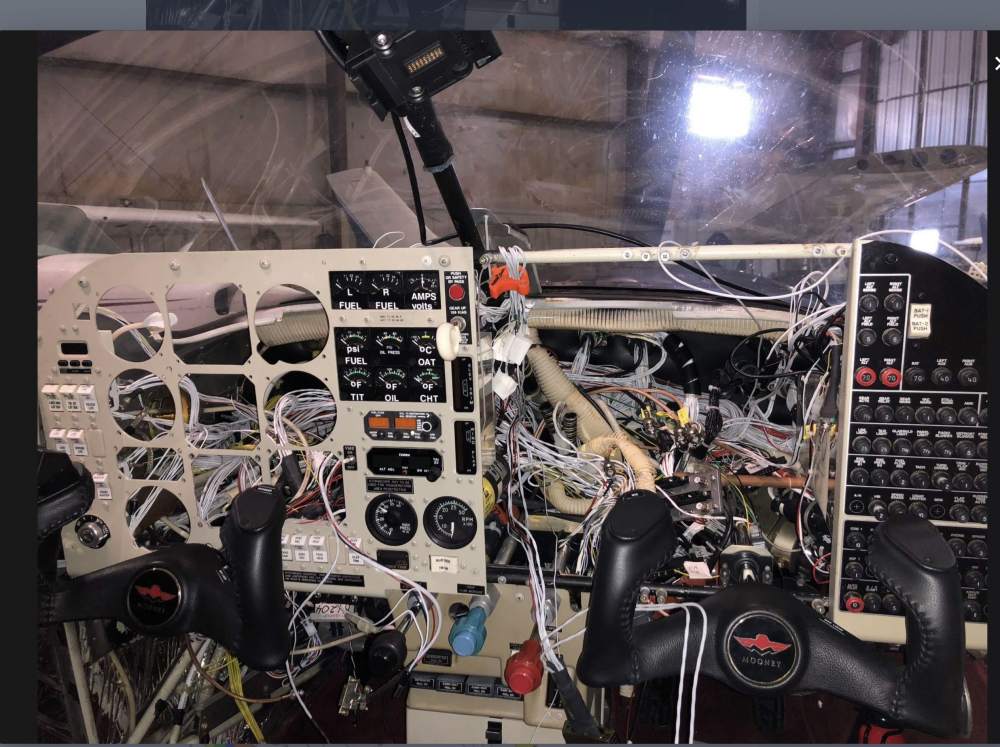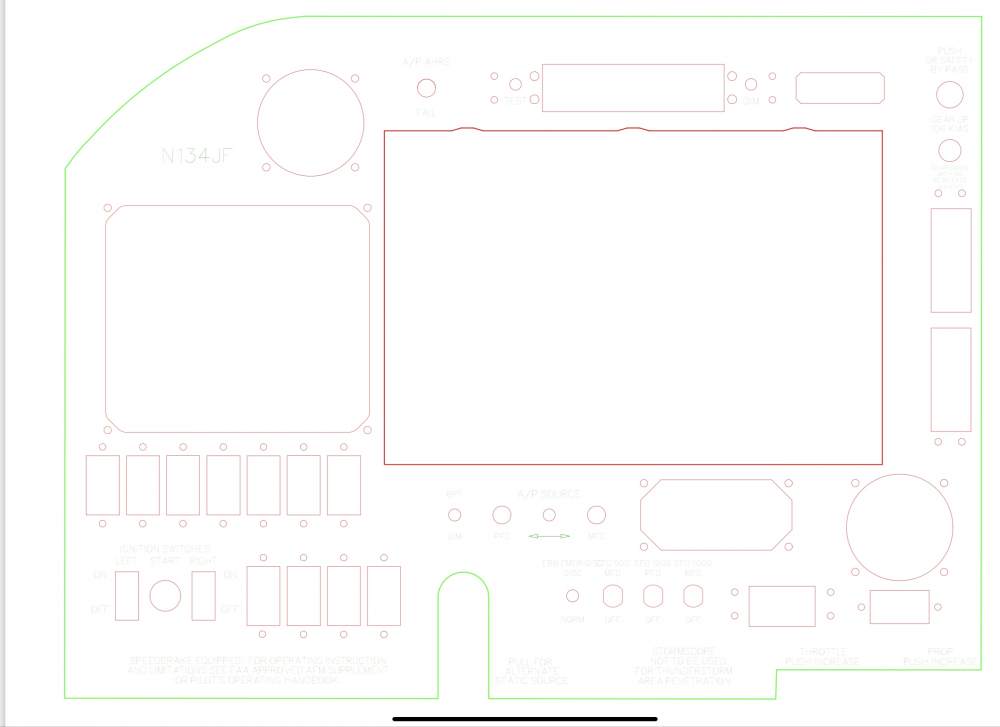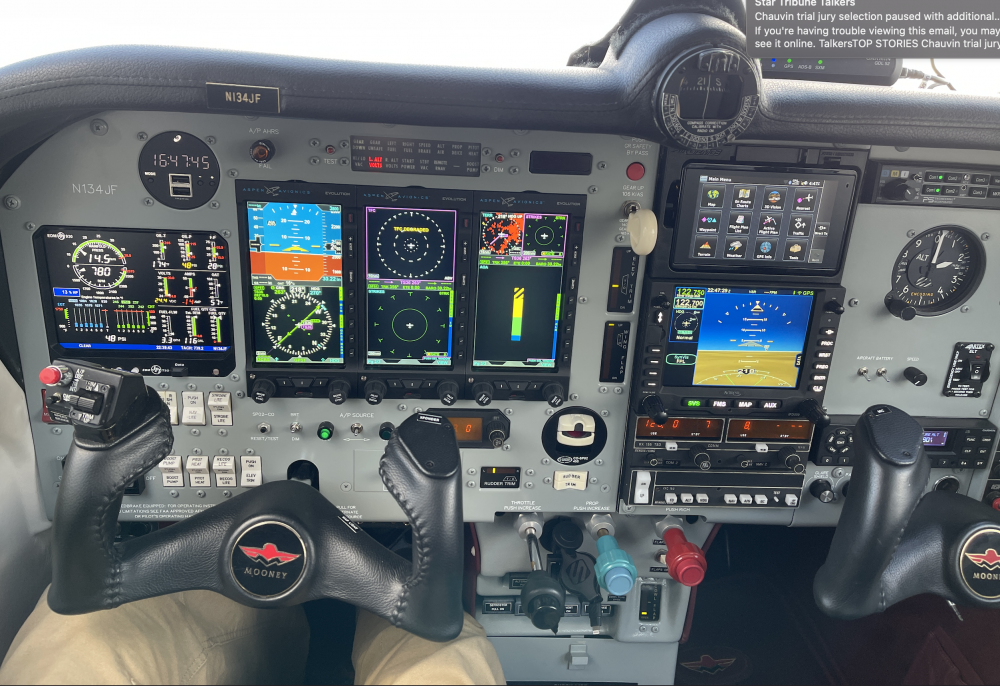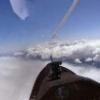Leaderboard
Popular Content
Showing content with the highest reputation on 03/10/2021 in all areas
-
9 points
-
8 points
-
6 points
-
I have enjoyed flying my own airplane for many, many years. I never once considered the resale value when I purchased. I purchased each plane [one Cessna [C175] and 3 Mooneys [ F, R, D/C]] for the enjoyment of it all........nothing more...... no expectations other that the thrill of ownership and flying I've been extremely fortunate to have had the privilege of personal flight all these years, and to have never taken a "bath" from such [lucky I suppose]. My philosophy has been that I will keep/own the plane until I can no longer fly, or I can no longer afford ownership. There were times when I could not afford the ownership and did liquidate the plane. My current little Mooney is in a financial range [and a relatively small financial investment], that if I suffered a complete loss [total], I would not feel slighted at all. I've had too much fun during my nearly 50 years up in the air! My fun far outweighs a dollar consideration...............my opinion is, what the heck is the money for anyway.....a means to an end, and that end is FUN!! With all that said, should rates continue to rise exhorbantly [a relative term], I may determine I can no longer afford to fly and will liquidate, or I may determine to self insure. It will be what it will be. As I've previously stated, I do sincerely hope climbing insurance rates will not make our older Mooneys unattainable for young newbie type owner wannabies. In the meantime, man, I've had a wonderful life of ownership/flight, and I'm currently having a GREAT time loving and flying my fun little beauty!! Keep on keepin' on y'all !5 points
-
Looks like a beak strike, too. There goes another one, driving up everyone's insurance rates.4 points
-
4 points
-
Speak for yourself. Everyone is different and there are plenty of members on this forum who went straight to a Mooney from the Private ticket. On the other hand, I've flown with a CFI or two, who shouldn't be turned loose with a Mooney. It all depends on the pilot.4 points
-
Some people didn't buy their airplane as a toy they bought it as a tool. Can you make every flight? Of course not, but to not go when there is a chance of ice in New England is a bit much for me. My experience in the past 2 years has been there is far less ice than forecasted. It makes sense for the weather people to be conservative. That said if you fly 30-40 hours a year then yes probably not I good idea to be near ice or fly IFR. The few time I do.. well all I can say is TKS is an amazing system.3 points
-
I bought my first Mooney, a g1000 310hp ovation two weeks before my ppl check ride. I had 40 hours total when I started flying in it. It was absolutely the right choice, and I would not hesitate to recommend it to anyone learning. I do believe the fact that I owned the plane (unlimited access) and flew with an instructor for close to 50 hours while working on my ifr in a Mooney was the reason it worked so well, but suggesting low time pilots “shouldn’t be in a complex high performance airplane”, is just wrong. Air Force and navy pilots are in turbines from day one. I do agree the individual has a lot to do with how fast people progress, but I believe most would adapt well, the Mooney is not that difficult a plane to fly.3 points
-
In smooth air alt hold should be within 10-20' from target. Depending on the severity of the turbulence it will increase but it should never go into continuous oscillations. Continuous oscillations are typically related to servo or trim issues, sometimes they can be related to the attitude source as well but are more prone to oscillate in smooth air. I checked the flight line book and the maintenance manual and neither give a reference for tolerance only the specs for the output error of 40mvDC/foot from the transducer. For the trim issues, the slip clutches are designed so they can be overpowered in a runaway condition so you can regain control of the aircraft and pull the breaker/remove power from the trim system. As others have mentioned, even with the system engaged you should never feel like you are going to break something in the attempt to override the trim. Any additional load or friction in the trim system has the potential to put the trim solenoid in a bind. With the solenoid in a bind even removing power from the servo will not allow it to properly release. There is even a test in the maintenance manual for the servo that requires you to put a load on the capstan at a preset torque limit, run the servo so the clutch will slip and then remove power from the solenoid. There should be a instant release with the solenoid and smooth operation by hand. If the solenoid does not instantly release, you adjust the alignment of the solenoid. I would suggest doing an thorough trim test/inspection of the system and replace/lubricate any parts that need attention. NOTE: do not spray any lubricant on the servo capstan or the slip clutch assembly.3 points
-
If its only an issue in Turbulence I wouldn't worry. I woud never use it turbulent air, the pilot can do a far better job than the AP. If it must be used in turblent air, then it should be used only in Pitch mode rather than altitude hold since the AP will stress the wings and tail far more than necessary. But mine will hold altitude within 20' in reasonably smooth air. Trim lock ups are a serious problem with an easy fix - see SB20-325 and SIM20-88A in the tech pubs section on www.Mooney.com The parts for the SI are not expensive nor is the labor to install it, this issue totalled a K model during landing not that long ago discussed here on MS too. On your #3, make sure the elevator trim rocker CB is always on before turning on master and avionics and that should fix the sonalert going on.3 points
-
I think it is wonderful that we are having these rational discussions. It seems like every time in the past we tried to talk about icing it always degenerated to where anybody who even tried to fly a non-FIKI airplane IFR in the winter was a fool who had no business flying. This is great!3 points
-
So this is a "learned from that" write up so others don't make the same mistake. I have undergone formation training with the Mooney Caravan and have flown some formation with others. Dan posted a picture of me and Alan departing from Mooney Summit in 2019. I was in a Cirrus SR-22 and he was in his S-35 Bonanza. I have flown formation with Alan in his Bonanza before - with me in my Mooney Missile. Though those airplanes are different, they are more similar than a Cirrus. The Cirrus does not climb as well and climbs faster. So with Alan in the lead when we departed in the Bonanza and Mooney, I stayed with him during a formation takeoff. In the Cirrus, when Alan departed. He rotated and started climbing prior to the Cirrus being fast enough to break ground. His climb out speed was slower than mine, thus I started pulling ahead even though he was in the lead, but he was higher than me. I was getting ready to "break it off." I still had him in sight but you can see in the picture taken how he was climbing better and I had more forward speed. Our saving grace was that the tower approved us for our turnout to the north east and when Alan turned, I was able to use that to get in proper position behind him to the right. Then I was able to manipulate the Cirrus to climb appropriately with him loosely tucked in on the right. I could have reduced power earlier, but with the Cirrus, I don't like to be too slow. However I should have reduced power a bit. Also, since then, I've trained some more and we could have done him taking off, then me waiting until he was a certain length down the runway for a staggered formation takeoff vs an in formation takeoff as we did with the Mooney and Bonanza earlier and as I'd been trained initially with the Mooney Caravan. We should have recognized the dissimilar rotation speed and climb speed but had been lulled into complacency as we've flown together in different but dissimilar aircraft prior. Plus as noted, we should have used a different takeoff technique/procedure. So, we learned something! And it did was fun. I'll repost the pic momentarily. -Seth2 points
-
Keeping within the Mooney ranks I’m curious what other members are looking for on the used market. These are planes you immediately check the condition, equipment, bank account, and imagine them in your hangar. For me the short list is: 87-88 205 J 97-98 encore 2004 ovation dx2 points
-
I pretty much have my forever plane. Once the AI G5, Trutrak, and Electric Step goes in, it's maintain it. Fix a few small fuel tank seeps, plan a top OH, then paint are about the main items I'd consider. She's running great right now so Top OH will only happen when a cylinder issue starts showing up. Since the bottom was IRAN about 600 hrs ago with the new prop, I'm hopeful she has a lot of hrs left... David sold me a great flyer... -Don2 points
-
2 points
-
The Mooney I lust after is the one that I own... but haven't flown in almost 6 months. I'd love to have a pressurized airplane, but I don't see that happening. I do hope to add a tailwheel high wing airplane to the hangar in the next year or so.2 points
-
Well, like most things, it is a matter of timing, which was my point. I may get back more than my purchase price, but it will all depend on when I sell it and what the economic conditions are at the time compared to when I bought it. Here's a valuation chart from Vref which is probably not accurate, but is likely representative. If I had purchased it in 2000 and sold it it 2014, I'd have taken a bath.2 points
-
The Bravo is great, but would love an Acclaim with TKS/FIKI. Something to poke through some layers..2 points
-
Active glider pilot (600+ hrs), raced gliders, flown cross-country in them, and currently a Glider authorized DPE. If I were able to re-write the regulations, everyone would at least solo in a glider before getting into any powered trainer.2 points
-
2 points
-
In my club, we do mix of ground tug & aerotow, it's far cheaper on ground tug but needs regular training plus one has to be extremly lucky & patient to get a thermal right nearby, but they work pretty well in places near big ridges in windy days, ground tug takoff is exciting: about 1-to-1 thrust-to-weight ratio on initial pull hard to match on fixed wings unless it's paid by taxpayers In US, I recon there will be as many Pawnees & Cubs than tractors & trucks, so I guess it's mostly aerotows (my most memorable glider takeoff was in SGS behind one Pawnee with dust & gravel in Lake Elsinore, glad I had a CFI(G) in the back, legally that counts as IMC zero/zero departure)2 points
-
2 points
-
It would have come with a copy of the STC including the AML and a permission letter granting you permission to use the STC to install the sun visors. Don't worry about it. Only a wet behind the ears IA would notice the sun visors and question the lack of a logbook entry and STC paperwork. If she/he were that anal, I'd go find another one. People get this all mixed up because they look at the definitions of major and minor alterations and decide that sun visors are obviously a minor alteration. What gets missed is that you are only allowed to put approved parts on a certificated airplane. It's not the modification, it's the part that's the issue. Suppose you buy a part from Mooney. No problem as the manufacturer is automatically approved to supply parts for their products. OK, now you buy a new Garmin GPS. No problem, since avionics are built to comply with a TSO, so you're covered. Nuts and bolts? They are standard hardware built to published industry specifications (AN, NAS, MS, SAE, etc.) and the FAA allows their use. Suppose you want to buy a Millennium cylinder from Superior Air Parts. Well, that comes with a PMA. Superior had to reverse engineer the design and prove to the FAA that their part was form, fit and function equivalent to the original manufacturer's part in order to be granted the PMA. What about a LoPresti cowling? Well, that's obviously a new design and requires an STC to install it. LoPresti would also have to have a PMA which is authorization to produce the parts you need to install the STC. So, what about Rosen. Well, their sun visors don't look anything like the Mooney parts -- that's the point. So, back when they were approved, the FAA must have thought they were more like a LoPresti cowling than a Millennium cylinder, thus the STC. Obviously, some FAA folks decided this was overkill and have allowed some parts (like the side window example I gave above) to get approved with simply a PMA. Skip2 points
-
According to Vref, my M20J was worth $194,000 when it was new (in 1994 dollars) and is worth now (with probably a modest $30K in upgrades) around $154,000. The reason you can sell a used airplane for more than you paid for it is a result of supply and demand and perhaps not fully accounting for upgrades and inflation. Skip2 points
-
According to Kevin Kammer at the factory, the eyeballs are made of Nylatron. I checked the chemical compatibility and it is impervious to most solvents. Kevin says they are supposed to be self lubricating, but he didn't see why Tri-flow couldn't be used. I've been trying to chase down a little "shudder" in my trim mechanism ever since I bought the airplane a 2-1/2 years ago. It only happens when trimming nose down manually on the ground. I cannot notice it in the air. I finally figured out that the cause was some minor friction in these ball joints. I took them loose from their mounting (but did not take them off the shaft which is a major operation) and cleaned them off. I noticed that the ball feels a little rough in it's motion in the race. I lubed it with some silicone plumber's grease which seemed to help. I also ordered a couple of new ones in case I decide to replace them. I received them today and noticed that the new ones, although smoother, still have a noticeable breakout force if loaded. There are very fine machining marks on the ball and race that increase the friction. You can only see them with magnification, but you can hear them singing if you work the two parts together or run your fingernail across the surface. Polishing the old ones smooth is probably just as good -- perhaps better -- than replacing them. Skip2 points
-
2 points
-
2 points
-
Dan Bass took this picture of us departing leaving Mooney Summit VII in Sept 2019. Alan and Anthony were in the Bonanza and Seth and Mari "Mars" Metzler were in the Cirrus. -Seth2 points
-
It's very situational. I have a 231, which is capable of flying into icing conditions any time of the year, meaning I can fly into freezing temperatures, but the aircraft is not FIKI certified. My main strategy is not to get into it. My secondary strategy, where I am in the air and icing conditions are developing, is to never allow myself to get into a "box" where there is no safe exit. I always want an exit strategy, should icing develop, that gets me out of the icing conditions. That may be lower, higher, or a hard right or left turn with a landing at an unplanned destination. I primarily use the icing graphics in Foreflight and on the aviationweather.gov site, but unforeseen conditions can develop in the air as well. Icing is where it is, not necessarily where it is not forecast, or where it is forecast. I can think of a few instances where I got into it. One, I was flying over some cloud cover on a night flight in WI at 10,000, and the cloud tops kept getting higher. I was reluctant to go up further because of adverse winds aloft, but the cloud tops formed long waves and I occasionally went through a top, which is the wettest part and the worst for ice. So after a couple of dips and picking up a little light rime, I simply got a new altitude assignment and went higher into clear air. I have good weather on the panel and knew that closer to my destination the clouds would abate, and I also had a secondary out by descending to warm temps. On another occasion, I was flying over some cloud cover at 21,000 in the middle of the summer and the clouds as I progressed along the route of flight kept getting higher and wider. I went to 23k, but then dipped into a cloud top and got slammed briefly. I was on the back side of a front. I was going south to north and the front was moving west to east, with better weather to the west. I could see that if I progressed further along the route it was possible that the cloud tops would equal or exceed my service ceiling (24,000) and the aircraft's climb rate up there is fairly poor anyway, so rather than risk it I requested a 120 degree left turn, diverted, and landed at I think it was Des Moines. Refueled and found a low altitude way of flying home, no ice. On another occasion I got very light icing while flying in the clear because cloud cover well above was dropping some precipitation. I was on the edge of the cloud cover, so I just requested a deviation left of course and got away from that edge. The one time I was in it for awhile, it was mid-summer and the ground temps and temps up to about 10k were nice and warm. I was at, I think 21,000, so I planned my descent to be rapid and to get through the wet mess and down to nonicing temps as quickly as possible. There are times when there is forecast icing and the conditions are there, cloud cover and freezing temps, but the density of the cloud cover is too low and icing just does not happen. There are times in the winter when we have a thin stratus layer that starts at nonicing temps and climbs into what could be icing temps if one applies the 4.5 degrees per thousand formula, but very often the temp in that cloud layer may remain stable all the way to the cloud tops and then it is clear. Skew T sometimes helps with that. So the strategy is: (1) stay home if conditions look bad for icing, (2) always have an exit, (3) never, ever let yourself get into a box because you have soldiered on because you are a better than average pilot, when you should have done something different.2 points
-
Ran across this and thought I'd chime in. Thanks John G. for the nice words. I was part of the original Mod Works before Mooney Mart came to be. Coy, Tim Coons and Kevin Surrell were all there with me. We shared many great times that will always stay with me. Kevin is gone and Coy is gone. I still have the photo of the day Joan flew in at sun-n-fun. I won't share the secrets I know of them but that was his soon to be new wife. I helped Coy get started with Mooney Mart and helped move him in that hangar. Even that was a battle with some people. I have stories that would get us both in trouble back then, but I will take those stories to my grave. Coy and I were in touch a few times prior to his passing. I can say, he never changed his way of thinking. I still talk to his daughter. He is missed and loved! Peace!2 points
-
2 points
-
First video with a new intro and the branding of the channel. If you want to get everything out of your engine heater you might want this cover. Sent from my iPhone using Tapatalk1 point
-
Further delays. The engine arrived in June. The people I had been working with at Continental were furloughed and the shop was on a smaller crew due to COVID. The engine looked good, but we didn’t check the specific STC items. We should have. We did note that the fuel hose for the front left cylinder was not shaped as the old one so we’d have to bend it or put a new one on to match the “winking” front cowl of the Mooney Missile. That should have been our indicator to look deeper then. I reached out to my contact Larry, Flight Resource LLC the distributor I was working with for MT regarding the prop. The 19 week lead time from late November was well past. We were at 28 weeks at that point. MT says they were not slowed down by COVID, nor shut down, but Germany got hit pretty hard by the pandemic and draconian shelter in place orders were enacted; I’m sure less people were there, suppliers may have been slower, whatever, but we were way behind. The prop was finally completed by the factory in July. That was round 33 weeks from order. There was a week long delay in getting it air shipped due to less flights, and thus less space available for cargo. Cargo flights were flying fine if not at increased capacity. However, most of the public (us aviators know) that so much cargo is transported in the bellies of international passenger jets. With those at a trickle or not happening at all in some cases, shipping delays were simply the norm (and still are, but not as bad now that we’ve “caught up” to the new reality). The prop arrived at Dulles in July, was delivered to Lancaster, PA for final assembly at Sensenitch and then trucked down to Freeway (W00) to the MSC to be installed. It arrived at the end of July 2020 or maybe the first week of August 2020 – I’ll have to check my notes. It was just about a year exactly from the incident. The delays were first on me for not ordering the prop until November, but also on the lead time and COVID slowing everything down during manufacturing. I’ll post some picks of what everything looked like as it was coming together. Next comes all the odd problems and delays that we encountered both with Continental and MT which helped stretch assembly in August 2020 to a first flight in February 2021. To be continued . . .1 point
-
There is, but it can easy chew up aluminum and remove Alclad etc. The problem with using anything to “blast” paint from aluminum is that the paint is actually harder than the aluminum it’s on. ‘Chemical stripping of course has issues too, it’s corrosive and gets into places you don’t want it and once there it’s tough to impossible to remove. ‘I think I’d try to pressure wash any loose pieces off myself and then hand strip what can be stripped and then prime and paint it. It certainly won’t be perfect but it would protect and look better1 point
-
According to what he told the insurance company, the gear was down but collapsed on landing.1 point
-
1 point
-
The N-number is just above the “Contest” i.d. on the vertical. The large Contest numbers are required on the vertical and under the wing because of close flying in races. It is helpful to know who is nearby when you are 50’ apart. Gliders have most of the same regs as power planes.1 point
-
Overhaul I can probably deal with. But I've said from the beginning, my flying career likely ends with a gear up landing . . . .1 point
-
1 point
-
Thanks a ton guys,schllc. I totally agree. I may spend more time with a instructor, but it will be in my plane. I’m willing to devote as much time as needed with my instructor until we are both comfortable with me flying it. I will probably go with the bigger plane but the mooneys a VERY sexy looking. They are great looking planes. Maybe cut a couple of inches off and lose 100 lbs. hahaha1 point
-
1 point
-
Thanks for identifying yourself as another A&P/IA, that's great as we get a lot of maintenance related questions here. I am as well, and an employed by Mike Buch of Savvy Aviation as well as an independent Flight Instructor. Mike wrote an article that addresses this topic head on, discussing differences in requirements from overhaul vs IRAN and more, that I'll quote a coupe paragraphs below. But the key point is to documents that something is “overhauled” the mechanic is required by regulation to follow manufacturers guidance to the letter, and that includes complying with manufacturers overhaul manual and mandatory parts replacement list (as referenced by the OH manual, either by referencing the SB or incorportating the text of the SB into the OH or both). Here are a couple of the pertinent points from Mike's article: Overhauled means disassembled, cleaned, inspected, repaired as necessary, reassembled, and tested in accordance with the manufacturer’s approved technical data—normally the overhaul manual as supplemented by service bulletins. The word overhaul implies conformance to service limits—not necessarily new limits—so if you want new limits you have to specify a new-limits overhaul. A new-limits overhaul is essentially the same as rebuilt, except that it doesn’t have to be performed by the original manufacturer and doesn’t receive a new serial number or a zero-time logbook. Repaired means inspected and repaired as necessary (IRAN) to restore the inoperative component to proper working condition. This term implies nothing about fits and limits, because there is no requirement to measure anything when performing a repair. One could, for example, remove a cylinder, replace a burned exhaust valve and guide, and then reinstall the cylinder without measuring anything, and call it a repair. A repair differs from an overhaul primarily in that there’s no obligation to follow the fits, limits, mandatory parts replacements, and other procedures in the manufacturer’s overhaul manual. The FAA’s late, great Bill O’Brien—who long served as the agency’s top maintenance guru—used to drive this point home to mechanics who attended his IA renewal seminars by using this catchphrase: “If you used a micrometer, then it’s an overhaul; if you didn’t, then it’s a repair.” ..... The words overhauled and rebuilt”are defined in FAR 43.2 and have specific regulatory meanings. If a mechanic documents that something is “overhauled” and hasn’t complied with every last jot and tittle of the overhaul manual and other manufacturer guidance (as referenced by the OH manual), he can lose his A&P certificate. However, if he documents that something is “repaired,” he can do as much or little as he sees fit to do—as long as he is satisfied that his repair work was performed properly in accordance with acceptable methods, techniques, and practices (e.g., typically the manufactureres Maintenace manual or AC 43.13.1b in the absence of manufactturer guidance) In short, if you ask for a repair, you give the mechanic or technician considerable discretion to do only as much work as he believes needs to be done—and that’s usually a good thing, assuming the mechanic is competent and you trust his judgment. On the other hand, if you ask for an “overhaul,” you eliminate the mechanic’s discretion and require him to do everything precisely by the book as required for an Overhaul. --------------------------- I added the text in italics above to clarify we're talking about guidance from the OH manual or maintenance manual and not just any arbittrary SB which are all optional for part 91 operators until being referenced by the OH manual and a OH is being performed making they mandatory. The full article is available here: https://www.aopa.org/news-and-media/all-news/2016/january/pilot/pe_maintenance - although it uses a Continental example, there is no difference between Lycoming and Continental. On a personal note, as you know this is the month to renew your IA, and I am actually getting mine signed off in the next hour. But I hope you can do the interiew process with a FSDO inspector in lieu of re-taking the exam! I know mine is very undertanding of these covid times and bending over beakcwards to help the 157 IA's in my FSDO renewing this month.1 point
-
1 point
-
I think that’s a color of green... It takes a lot of monney to get a good Mooney! Go MS! -a-1 point
-
I have a K with KFC200 and the altitude hold keeps the selected altitude within 50 feet or better. From what you describe, I suspect you have a problem with your trim system. The jack screws are known to get stiff with age if not serviced, and eventually the electric trim motor will not be able to cut it. You should not hear the trim warning sonalert in flight unless the trim has failed, and with the electric trim off, you should be able to manually trim with very little effort on the trim wheel, so something is definitely wrong. I would start with the maintenance log and see when it was last serviced.1 point
-
As far as removing cylinders and changing tappets, I’m pretty sure due to their design that flat tappets require the cases to be split. If your splitting cases, go ahead and overhaul, an overhaul does not require good parts to be replaced, a Lycoming SB does. ‘But odds are that if your splitting the cases your doing the work of an overhaul anyway. ‘An A&P is doing the work correct?1 point
-
1 point
-
Personally, I think insurance costs will continue to rise, but the value of a Mooney won't have anything to do with that cost increase. Sorry, but if you are basing even part of your purchase decision on the value increasing...you should NOT buy. That sounds too much like you believe buying a plane is an investment; it is 100% NOT an investment! A partnership might well be the best way to test whether full ownership is for you. The planes we own and discuss here are mostly for our own enjoyment; some may be a business tool for transportation and have tax advantages. But, even so, I doubt many of those business people view the plane as an investment as much as a depreciable tool that they enjoy using. Early on I realized I was buying an EXPENSIVE toy. As soon as I realized that I could afford it, l no longer felt any need to RATIONALIZE ownership: it's a HOBBY I very much enjoy...in the end that's all that matters to me. YMMV1 point
-
1 point


